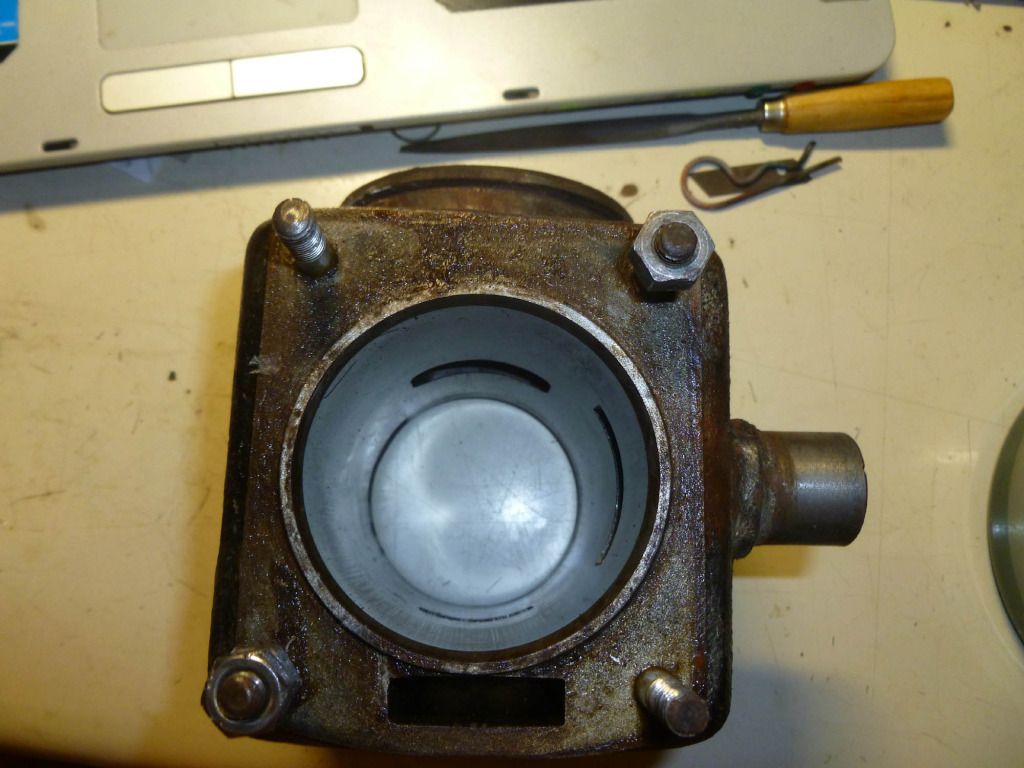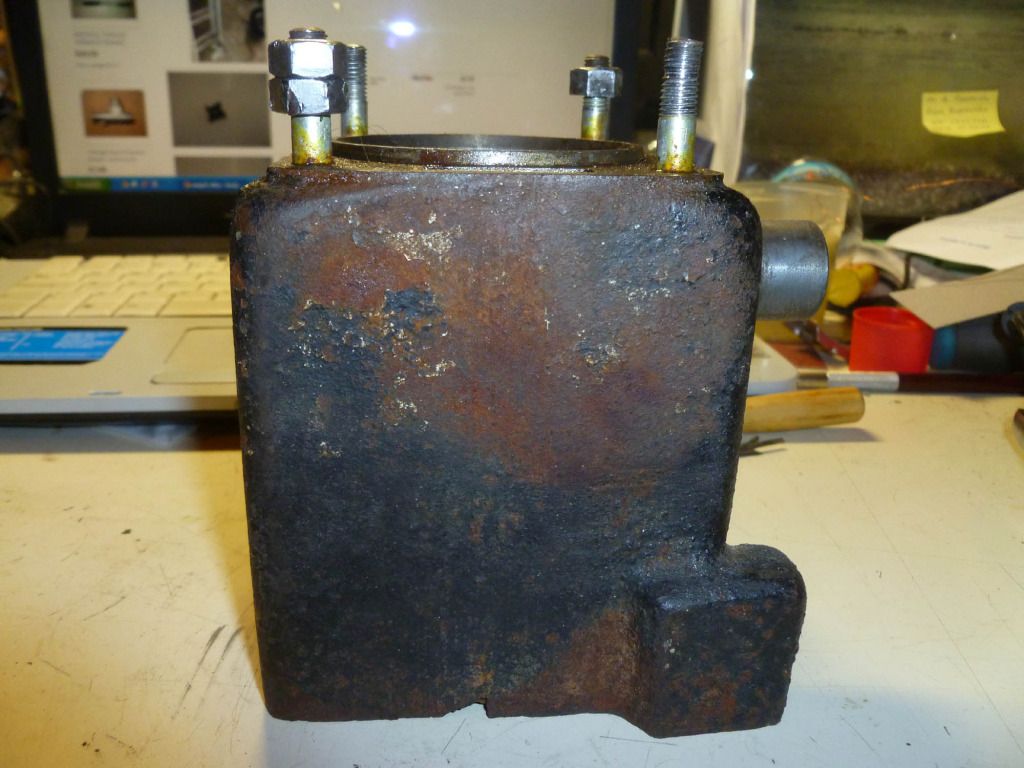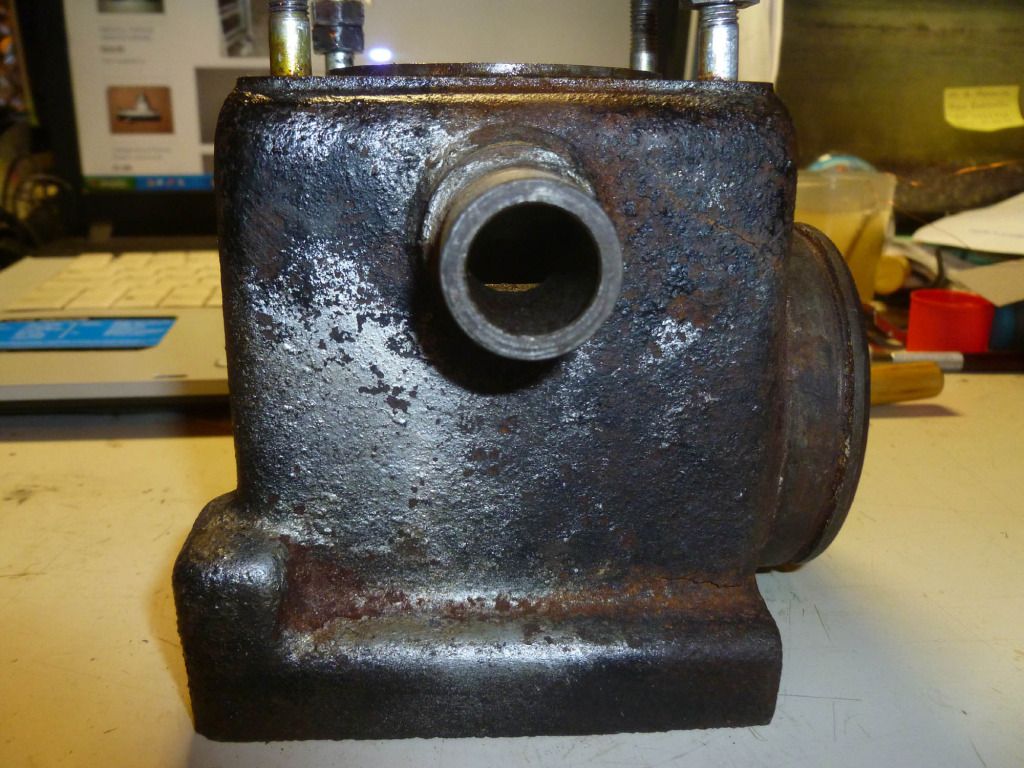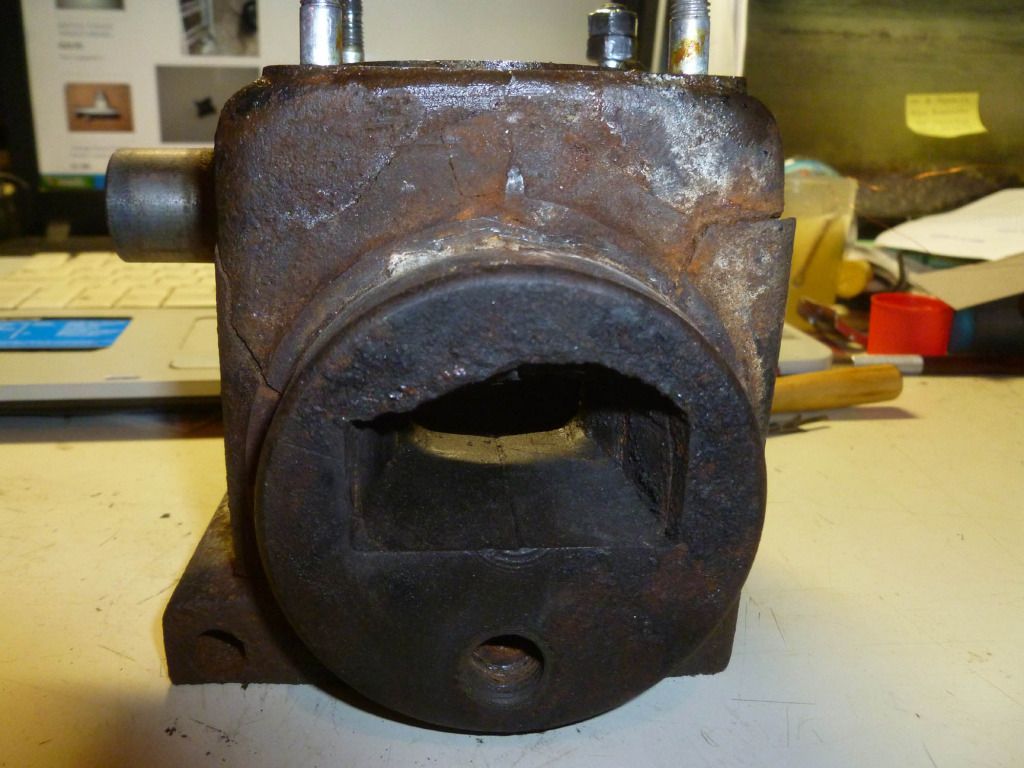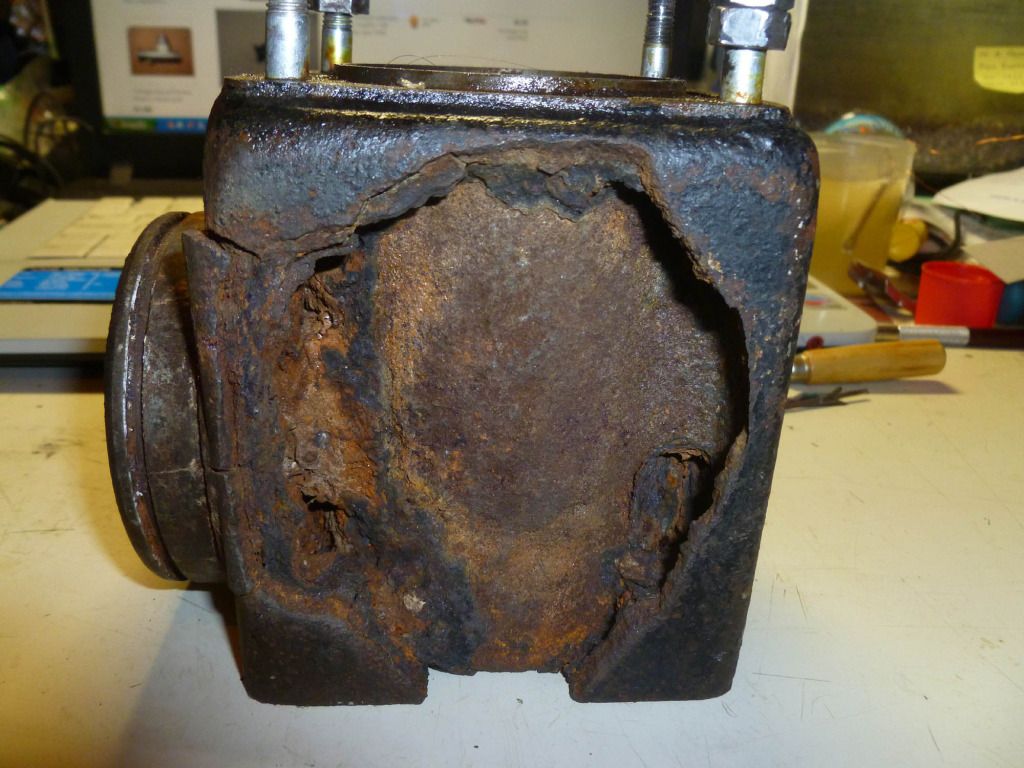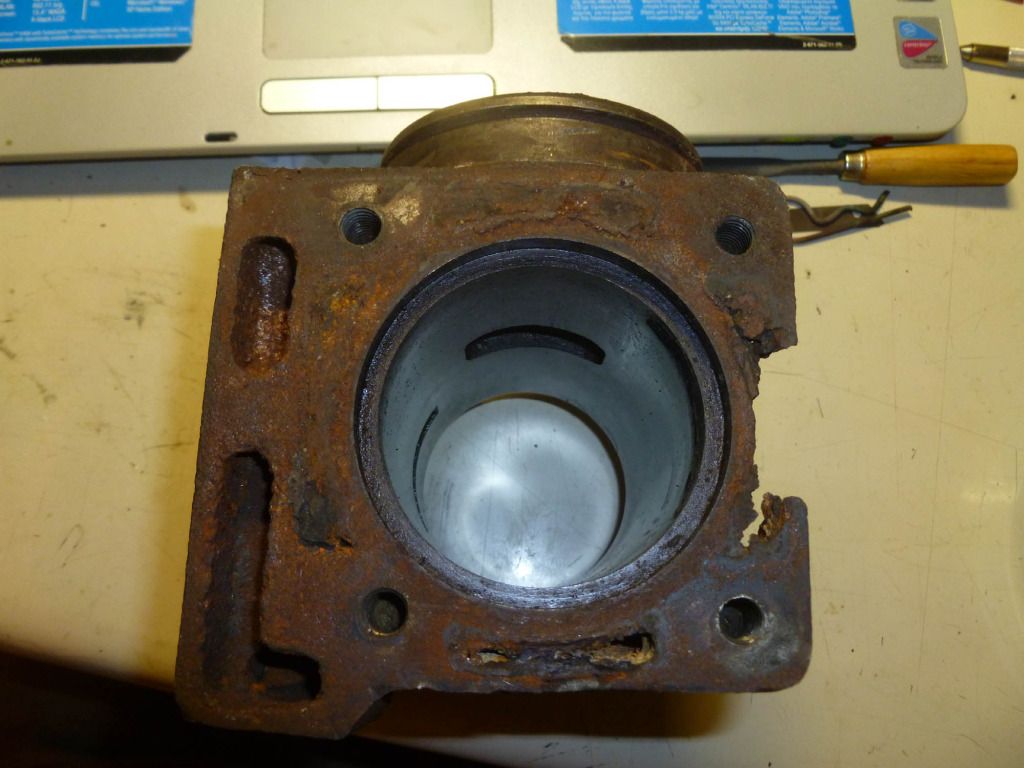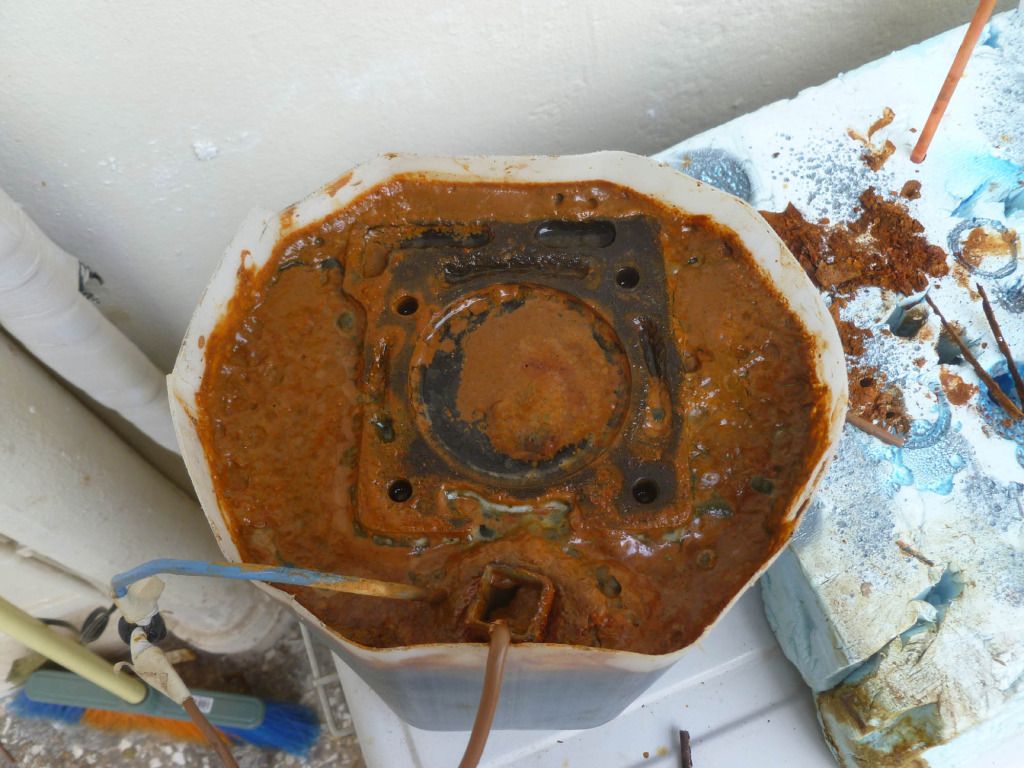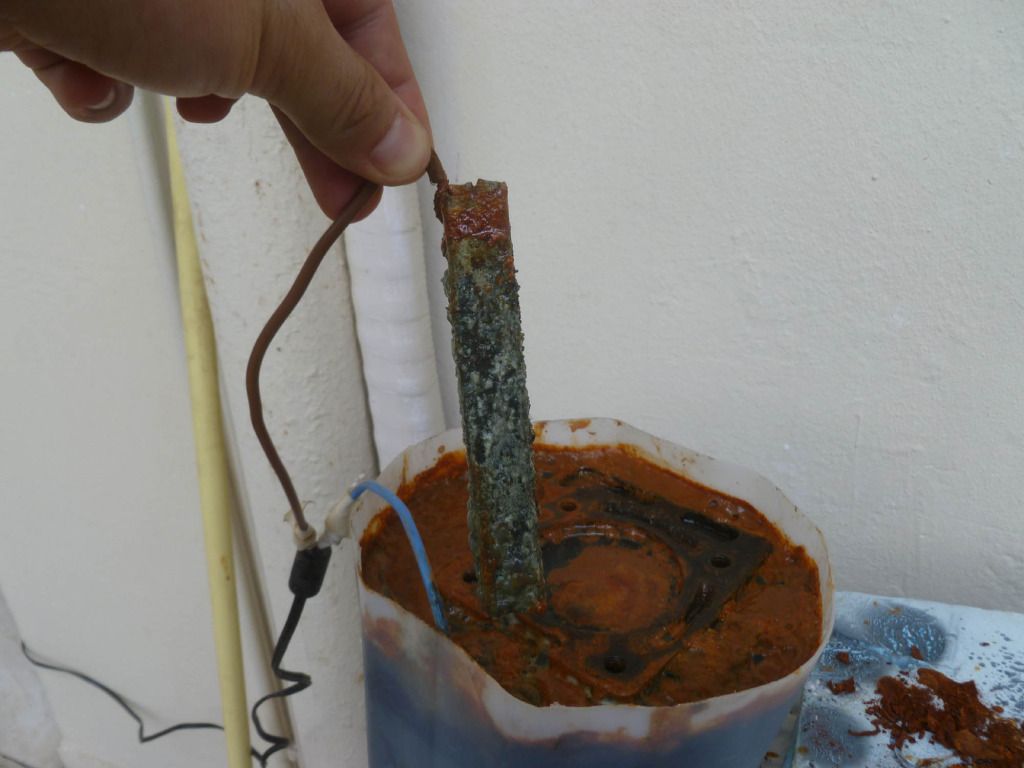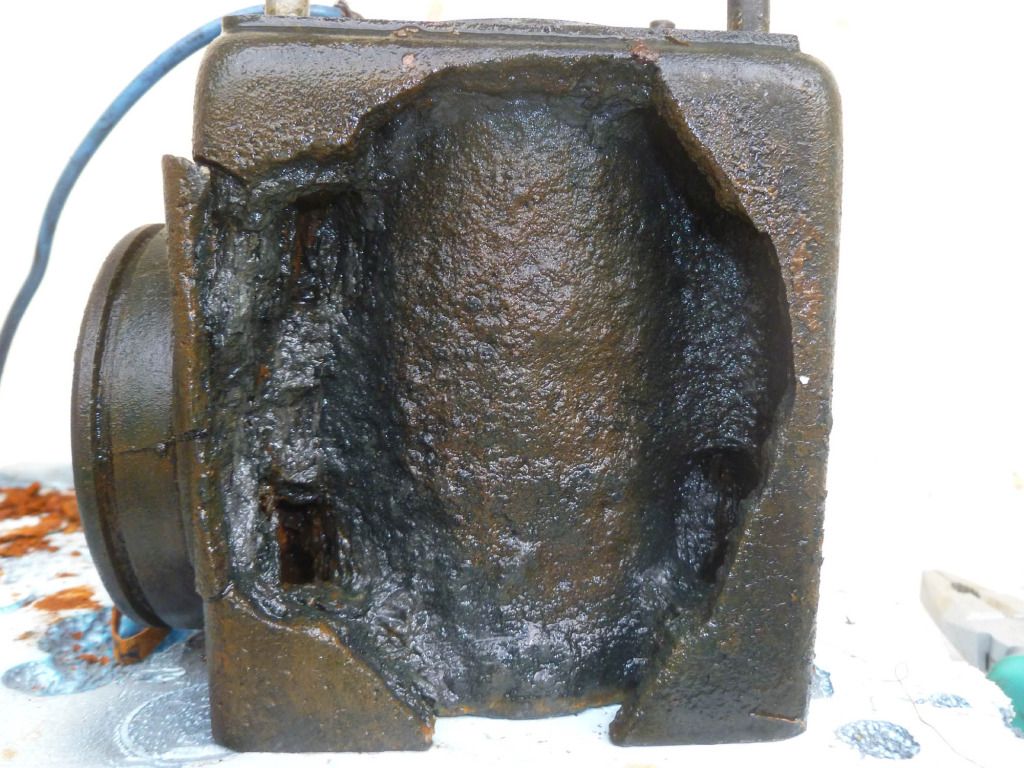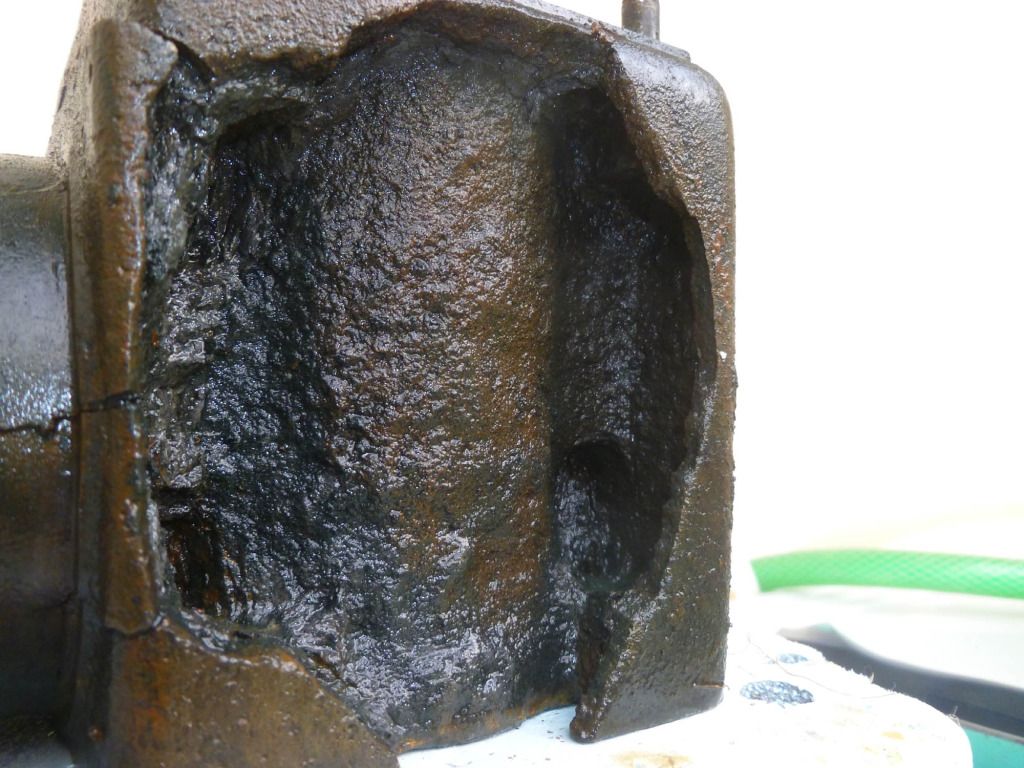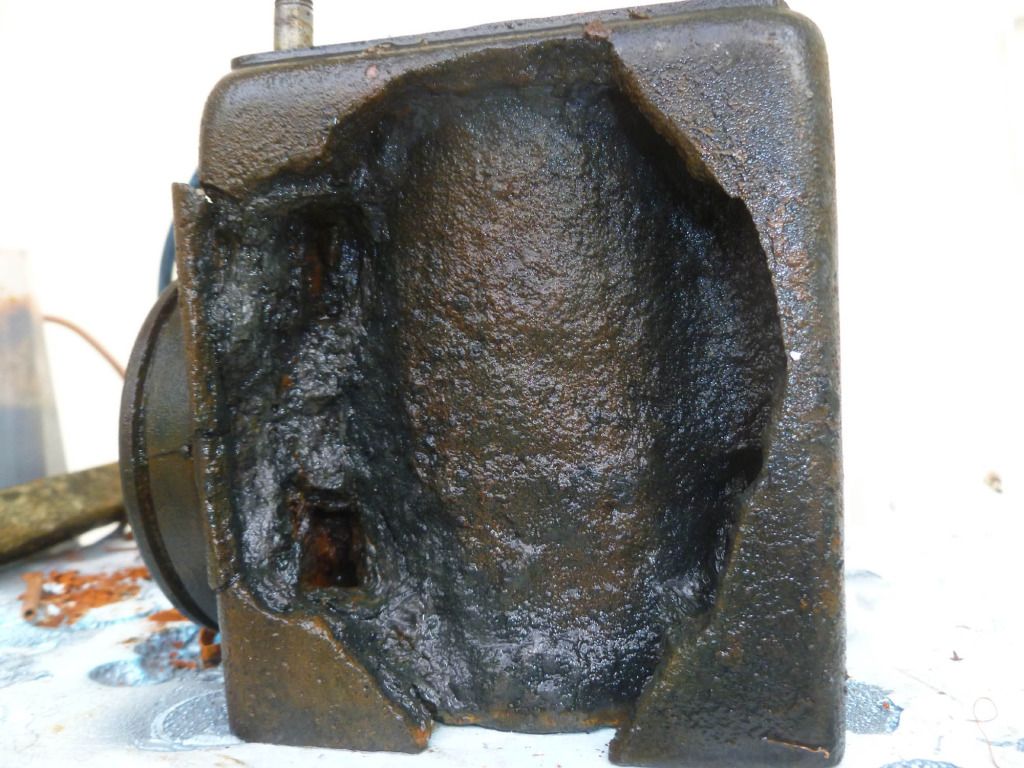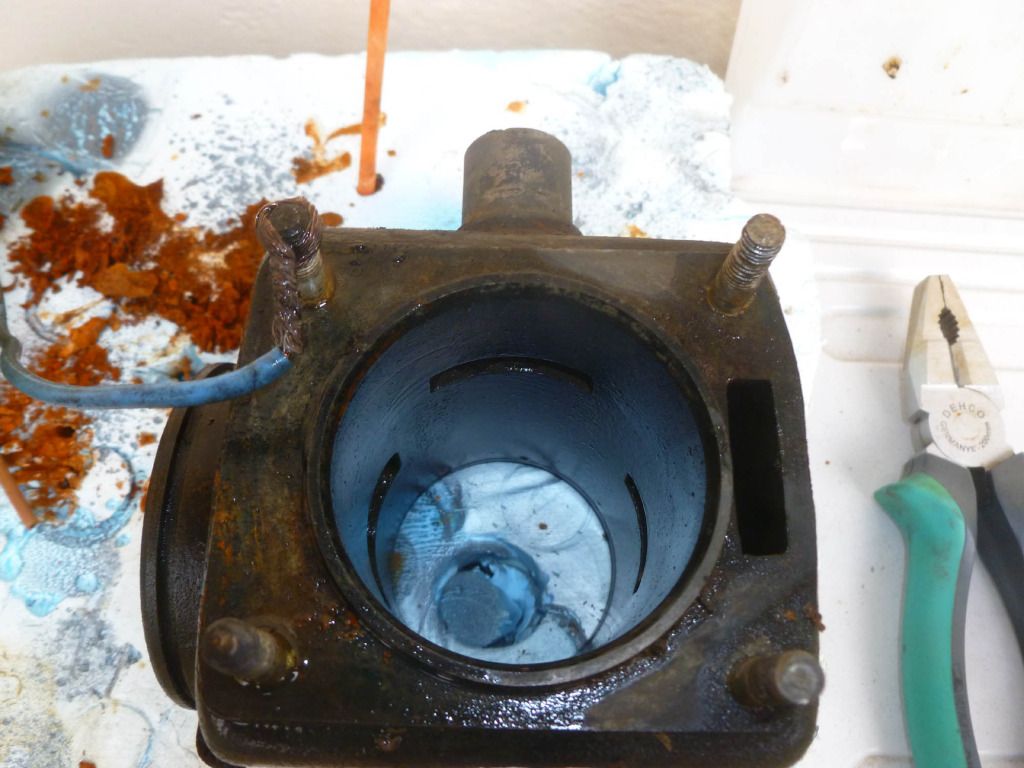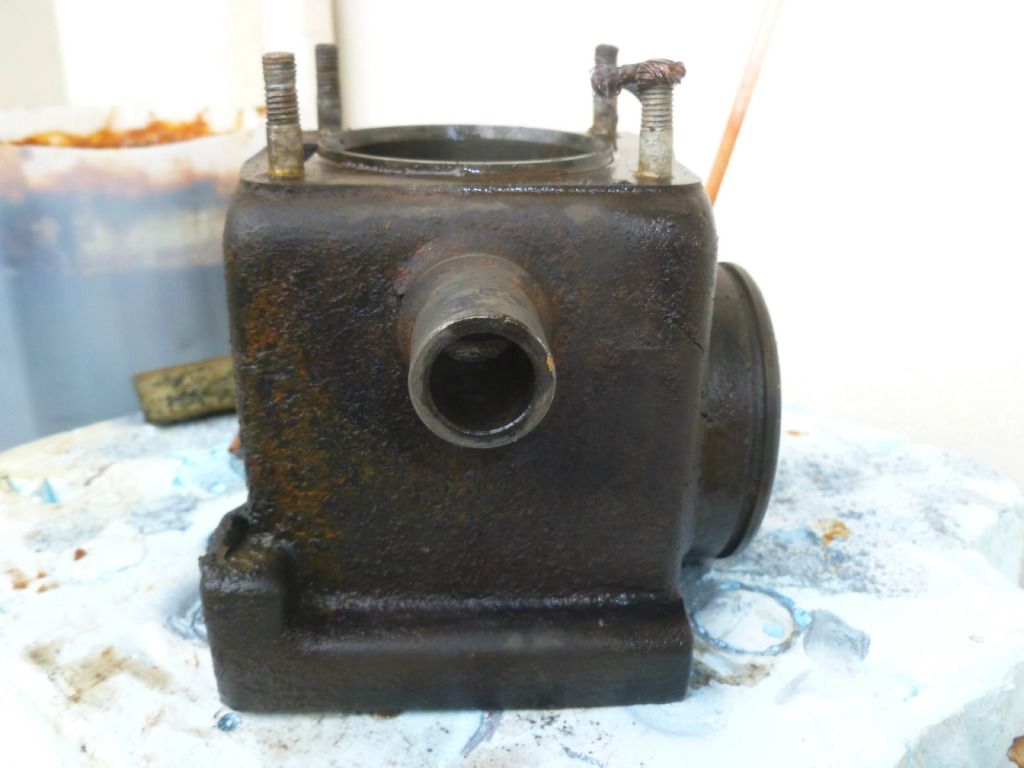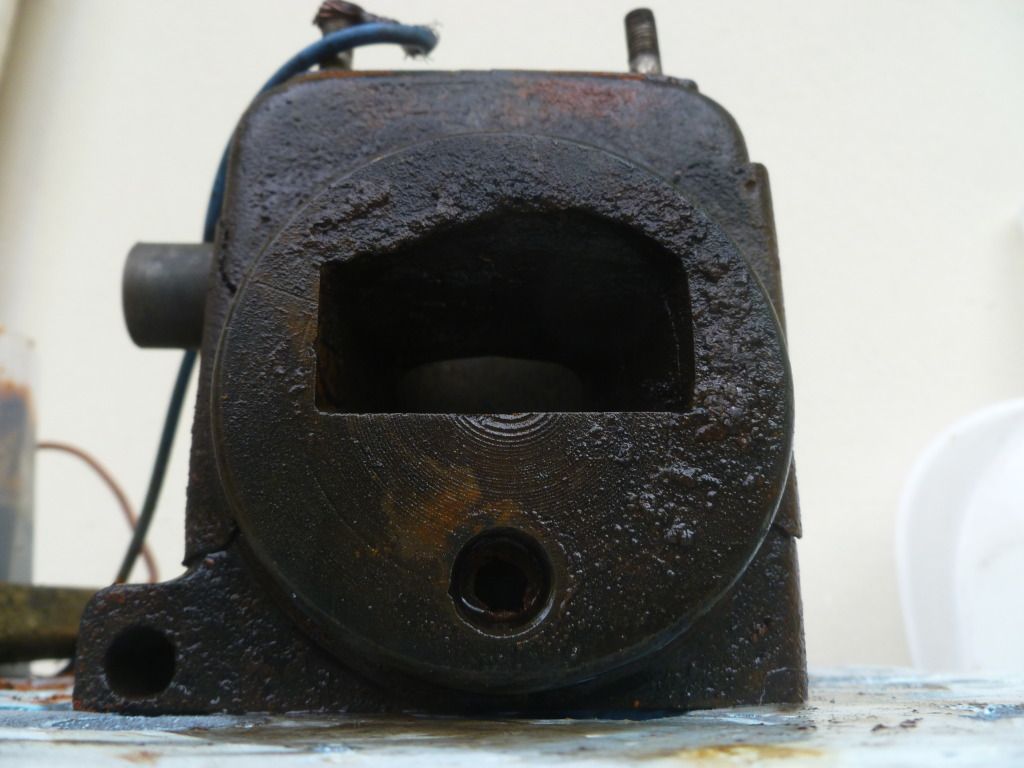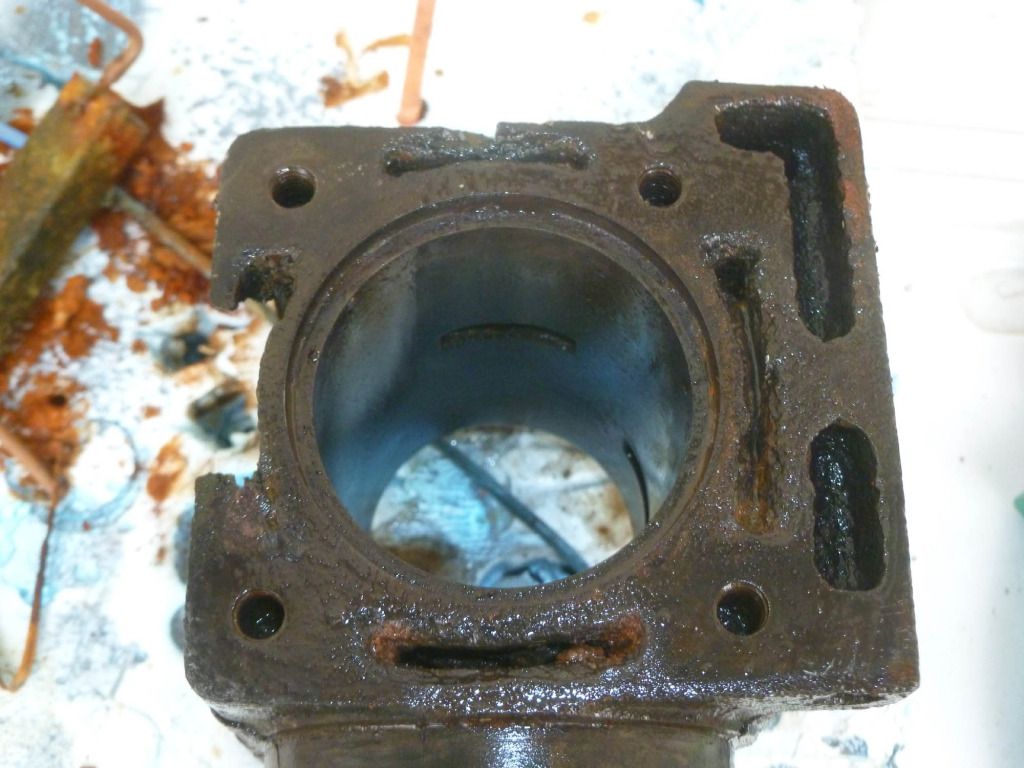Re: Removing rust from water jacket
Posted: Mon Oct 08, 2012 1:13 am
Has anyone tried Molasses I had some success with it a couple years ago though I haven't used it on a
Seagull barrel yet going to make a new mix this week.
Found this on the Old Marine Engine site anyone tried this-
RUST REMOVAL
Rust can be safely removed off of STEEL parts by converting the rust itself, i.e. FeO2 and Fe2O3. Rust, hydrated iron, can be chemically "reduced", that means converted from a bonded molecule to a simple molecular Fe with free disassociated floating anions, by attacking the rust molecule with a charged molecule of something that likes bonding better than Fe. For this case Zinc works great.
How is this done, chemical reactions of this nature generally work faster with higher temperatures, a fluid bath is needed to better transport the replacement molecule to target areas. The Zinc must be turned into molecular Zinc and electrically charged to go after the rust and replace the Fe molecule with itself.
Now that is the theory so how do we get there?? Iron is pretty much impervious to alkaline solutions but dissolves in most acids. Zinc will dissolve in just about anything. We make up a solution of lye ( Caustic soda) and water at the ratio such that the water will boil at approximately 132 Deg c, well above the normal 100 Deg C. (50/ 50)Toss in some Zinc, preferably Zinc Oxide or just dirty Zinc. The Zn dissolves into the NaOh (lye) and leaves the Zn now charged positive. Since Zinc likes to bond to things better than Iron (Fe) the Zn+ molecule attacks the rust and takes the Iron molecule off and bonds itself to the Oxygen molecules that made up the rust. BUT in doing so it winds up floating in the solution. The result, the rust gets stripped off the Iron part, the Iron itself is untouched. This type of process has absolutely no bad effects to the original part just to the rust on the part. If you were to try an acid dip it would attack the base metal itself, the iron part.
The next trick in using this is as follows;
Hang the part on a piece of steel wire in the solution so you can pull it out from time to time and check it. I use safety wire for bolt heads. When the parts are done rinse them under lots of COLD running water. Next I immediately drop the parts into a solution of oily gasoline or thoroughly spray down with WD-40 to displace any water on the surface, sometimes then heat the part on a tin can lid (lid from the coffee can) to warm the part and drive off any remaining water in the pours of the metal, helps drive the oil into the surface as a preservative effect.
Cool trick of this process is that the lye being alkaline it treats the micro surface of the part and inhibits rust formation on a raw metal surface. If you try to acid dip a part it will always leave micro deposits of acid in the pours of the metal and it will re-rust in a matter of days. In an alkaline process this will never happen. If you see a gray smut form on the surface that is the carbon found in steel, part of the manufacturing process to make steel out of iron. Carbon is inert to these solutions so when the rust is dissolved into the solution it leaves behind the contained carbon. Just wash if off, I often use a tooth brush.
John
Seagull barrel yet going to make a new mix this week.
Found this on the Old Marine Engine site anyone tried this-
RUST REMOVAL
Rust can be safely removed off of STEEL parts by converting the rust itself, i.e. FeO2 and Fe2O3. Rust, hydrated iron, can be chemically "reduced", that means converted from a bonded molecule to a simple molecular Fe with free disassociated floating anions, by attacking the rust molecule with a charged molecule of something that likes bonding better than Fe. For this case Zinc works great.
How is this done, chemical reactions of this nature generally work faster with higher temperatures, a fluid bath is needed to better transport the replacement molecule to target areas. The Zinc must be turned into molecular Zinc and electrically charged to go after the rust and replace the Fe molecule with itself.
Now that is the theory so how do we get there?? Iron is pretty much impervious to alkaline solutions but dissolves in most acids. Zinc will dissolve in just about anything. We make up a solution of lye ( Caustic soda) and water at the ratio such that the water will boil at approximately 132 Deg c, well above the normal 100 Deg C. (50/ 50)Toss in some Zinc, preferably Zinc Oxide or just dirty Zinc. The Zn dissolves into the NaOh (lye) and leaves the Zn now charged positive. Since Zinc likes to bond to things better than Iron (Fe) the Zn+ molecule attacks the rust and takes the Iron molecule off and bonds itself to the Oxygen molecules that made up the rust. BUT in doing so it winds up floating in the solution. The result, the rust gets stripped off the Iron part, the Iron itself is untouched. This type of process has absolutely no bad effects to the original part just to the rust on the part. If you were to try an acid dip it would attack the base metal itself, the iron part.
The next trick in using this is as follows;
Hang the part on a piece of steel wire in the solution so you can pull it out from time to time and check it. I use safety wire for bolt heads. When the parts are done rinse them under lots of COLD running water. Next I immediately drop the parts into a solution of oily gasoline or thoroughly spray down with WD-40 to displace any water on the surface, sometimes then heat the part on a tin can lid (lid from the coffee can) to warm the part and drive off any remaining water in the pours of the metal, helps drive the oil into the surface as a preservative effect.
Cool trick of this process is that the lye being alkaline it treats the micro surface of the part and inhibits rust formation on a raw metal surface. If you try to acid dip a part it will always leave micro deposits of acid in the pours of the metal and it will re-rust in a matter of days. In an alkaline process this will never happen. If you see a gray smut form on the surface that is the carbon found in steel, part of the manufacturing process to make steel out of iron. Carbon is inert to these solutions so when the rust is dissolved into the solution it leaves behind the contained carbon. Just wash if off, I often use a tooth brush.
John
